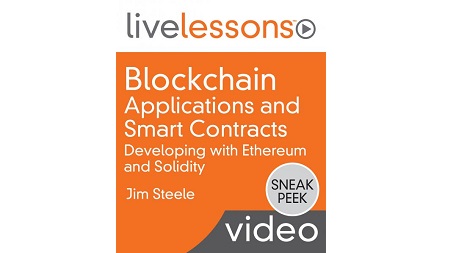
English | MP4 | AVC 1280×720 | AAC 44KHz 2ch | 3h 02m | 1.25 GB
Blockchain, the underlying technology of cryptocurrencies, is positioned to revolutionize the world economy; and Ethereum as a particular blockchain enables new decentralized use-cases with the ability to run programs called smart contracts.
The Blockchain and cryptocurrency are important tools for a decentralized market that needs to protect its speed, security, and reputation. Blockchain technologies are being researched by the largest corporations to securely transact and run their business. The concept of smart contracts, micro finance, and transparent transactions are all benefits of the Blockchain. This course will provide a developer the techniques necessary to write applications that run on a Blockchain.
What You Will Learn
- What are relevant Blockchain application use-cases
- How to set up a development environment for Solidity
- Details of the Solidity language and how to code a smart contract
- How to create a test network to test applications without cost
- How to launch a smart contract in a live network
Who Should Take This Course
- Anyone who is interested in learning the basics of smart contracts
- Developers, program managers, and blockchain enthusiasts
- Computer professionals, software engineers, and algorithm engineers
Table of Contents
01 Blockchain Applications and Smart Contracts – Introduction
02 Learning objectives
03 1.1 Explain the history of blockchain technology
04 1.2 Understand the consequences of double-spending avoidance
05 1.3 Appreciate the objectives of different blockchains
06 1.4 Add smart contracts to blockchains
07 1.5 Determine relevant smart contract use-cases
08 Summary
09 Learning objectives
10 2.1 Introduce Ethereum as a blockchain for smart contracts
11 2.2 Use Truffle as a smart contract development tool
12 2.3 Explain Ethereum addresses and transactions
13 2.4 Understand the relationship between Ether and Gas
14 Summary
15 Learning objectives
16 3.1 Explain the structure of a Solidity smart contract
17 3.2 Use Solidity declarations
18 3.3 Utilize Solidity function modifiers
19 3.4 Understand Solidity error checking
20 Summary
21 Learning objectives
22 4.1 Test smart contracts on a personal blockchain
23 4.2 Debug smart contracts
24 4.3 Deploy smart contracts on a test and live network
25 Summary
26 Learning objectives
27 5.1 Creating a token framework
28 5.2 Creating a minimum viable token
29 5.3 Adding more robust error checking
30 5.4 Adding more advanced features
31 Summary
32 Blockchain Applications and Smart Contracts – Summary
Resolve the captcha to access the links!